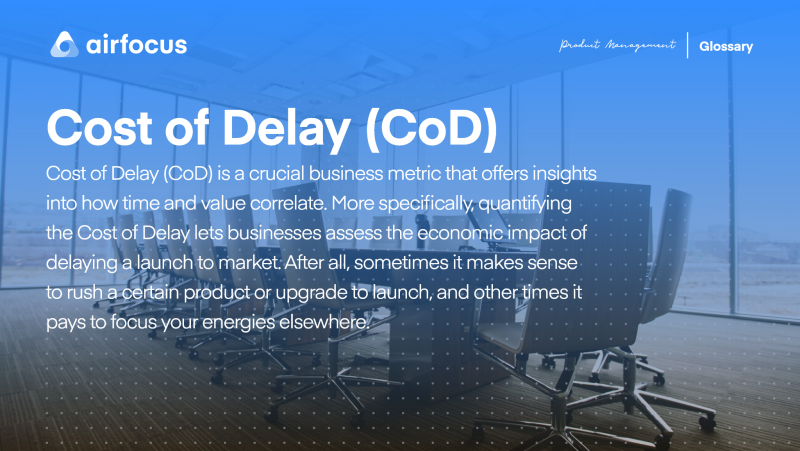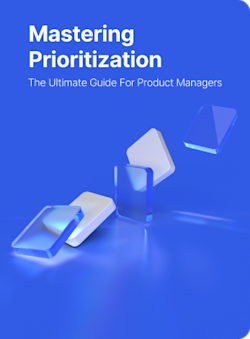Cost of Delay (CoD)
What is cost of delay (CoD)?
Definition of cost of delay (CoD)
Cost of delay (CoD) is a crucial business metric that offers insights into how time and value correlate. More specifically, quantifying the cost of delay lets businesses assess the economic impact of delaying a launch to market. After all, sometimes it makes sense to rush a certain product or upgrade to launch, and other times it pays to focus your energies elsewhere.
By dissociating urgency from value, the CoD metric provides a clearer picture of how to allocate resources. It can be used to approach projects in software development, IT operations, or product development in general.
From a product manager’s point of view, the cost of delay framework is an efficient decision-making tool that can completely transform the mindset of an organization. It does so by putting a value lens over the conversation of costs and deadlines, offering full-scenario visualizations of what the most critical tasks really are.
How to calculate cost of delay
At a basic level, to calculate the cost of delay you need to estimate the user business value that a particular feature would bring monthly and multiply it with the time criticality (duration required for the build).
So if Feature A takes four months to build and has a user business value of $8,000 a month, then the CoD is calculated by multiplying 4 with 8,000 ($32,000). Subsequently, each month of delay would increase the CoD by $8,000.
Now let’s say you want to prioritize among multiple tasks in your backlog.
For simplicity, let’s take the example of two features. Imagine that you have the above Feature A and Feature B. As we know, Feature A needs 4 weeks to build and generates $8,000 a month. Feature B takes 12 weeks to build… but will generate $15,000 each month.
Which one should you prioritize?
Here’s where things get interesting, as you need to calculate another parameter referred to as CD3 (CoD divided by duration). To crunch this number, divide profit by duration and then again by 1,000.
It results that Feature A has a CD3 of 2 (8,000/4/1,000), while Feature B has a CD3 of 5 (15,000/3/1,000). The higher CD3 indicates the feature you should prioritize — Feature B in this case.
Depending on the complexity of a project, product managers can prioritize by comparing the CoD associated with various management scenarios. For large-scale projects, they can predict how costs would change if they would choose to prioritize by value, by duration, or by CD3 as above.
Benefits of using the cost of delay framework
The cost of delay framework is a powerful decision-making tool that aids product managers in prioritizing tasks based on monetary value; eliminating flawed resource allocations as a result.
The clarity in decision-making reflects in an improved ROI, achieved with limited resources. By correctly estimating the user business value of a specific task, alongside its time criticality, software teams can tackle projects based on the real market profits they’ll achieve.
Another benefit of cost of delay is the ability to manage stakeholders’ expectations by providing quantifiable data. CoD gives insight into the financial risks and opportunities each change in scope and schedule unfolds.
That’s why the cost of delay metric also becomes a powerful marker for sensible financial trade-offs. The framework provides in-depth monetary statistics for various delivery options that would be hard to assess otherwise.
Last, but definitely not least, the cost of delay encourages a change in the corporate mindset. It shifts the focus from less-useful metrics (such as previously-agreed dates) to meaningful parameters that reflect the priorities of value and urgency.

General FAQ

Glossary categories
Prioritize with confidence

Experience the new way of doing product management








